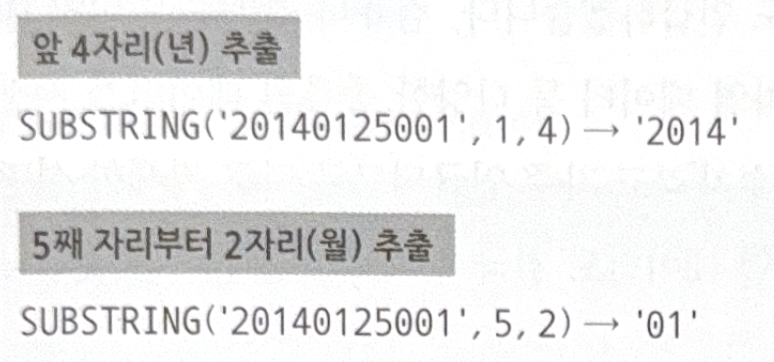Combining Character
To combine characters use +(SQL Server), ||(Oracle, DB2, PostgreSQL), or CONCAT(MySQL).
mysql> SELECT * FROM sample35;
+------+-------+----------+------+
| no | price | quantity | unit |
+------+-------+----------+------+
| 1 | 100 | 10 | 개 |
| 2 | 230 | 24 | 통 |
| 3 | 1980 | 1 | 장 |
+------+-------+----------+------+
3 rows in set (0.00 sec)
mysql> SELECT CONCAT(quantity, unit) FROM sample35;
+------------------------+
| CONCAT(quantity, unit) |
+------------------------+
| 10개 |
| 24통 |
| 1장 |
+------------------------+
3 rows in set (0.00 sec)
Extracting Character
To extract character, use SUBSTRING(SUBSTR for some products).

Removing Space in the front and back
To remove space in the front and back of a character, use TRIM. This will not remove space between the character.

By setting parameters, you can remove other character instead of space.
Length of Character
To return length of character, use CHARACTER_LENGTH(or CHAR_LENGTH).
OCTET_LENGTH will return the character length in byte unit. The byte length is not always same as the length of character, according to the character set.
For Korean, ‘EUC-KR’ and ‘UTF-8’ are common encoding methods. In ‘EUC-KR’, ASCII is 1 byte, and Korean is 2 byte. In ‘UTF-8’, ASCII is 1 byte, and Korean is 3 byte.
All images, except those with separate source indications, are excerpted from lecture materials.

댓글남기기